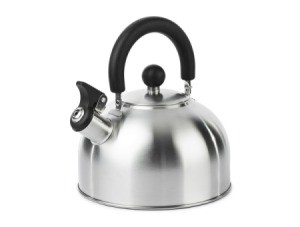 Wipe your stainless tea kettle shortly after it has boiled. It's easier to wipe kitchen grease off it while it's still hot. Just be careful not to burn yourself.
Wipe your stainless tea kettle shortly after it has boiled. It's easier to wipe kitchen grease off it while it's still hot. Just be careful not to burn yourself.
By fransmission
Here are the questions asked by community members. Read on to see the answers provided by the ThriftyFun community.
I used a jug to measure olive oil for cooking and the residue was still there when I used it to fill the kettle with water. Now the water from the kettle has a not so good taste. Any ideas how I can get rid of this oil residue form my kettle. I have tried Fairy liquid descaler and reboiling.
Blue Dawn will remove grease and oil.
The inside is clean. It is the lid that needs help. Any ideas?
Try Barkeepers Friend.
I've always cleaned the tea stain on a teapot with some baking soda and a sponge. It is easy to do this and just dampen your sponge and add the baking soda.
I clean most everything in my kitchen with vinegar and baking soda. If the stain is really bad and it isn't a metal that may scratch, I add salt. A clean old toothbrush is handy for cleaning awkward places like the plastic kettle lids. Try making a paste for maximum cleaning power. It is supposed to fizz! Rinse with warm water.
Baking soda works well but I also use Soft Scrub or Barkeepers Friend and then finish with vinegar.
a scrubby salt cleanse would be good to really get the stain and the grit out. Also baking soda and vinegar explosion can help eliminate grit
I always get the tea stains off by using cleaning powders such as Ajax, use a soft sponge and rub off, be sure and rinse thoroughly with warm water .
Vinegar can be a helpful natural cleaner to remove build up inside your water kettle. This page is about cleaning mineral deposits from a tea kettle.
Sometimes hot milk before bedtime is a good idea and sometimes it may cause a mess. This is a page about cleaning burned milk out of a tea kettle.
It can be challenging to clean sediments and rust inside an old metal tea kettle. This is a page about remove rust from inside antique tea kettle.